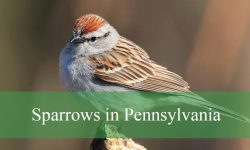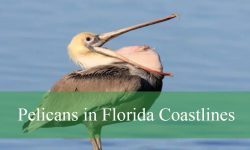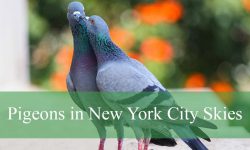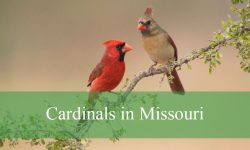Las Vegas, widely known for its vibrant city life and desert landscapes, is also home to some remarkable wildlife, including majestic eagles that soar the skies above the region. While the bright lights of the Strip dominate the cityscape, nature lovers and birdwatchers can find a different kind of spectacle in the skies and nearby natural areas. Eagles in Las Vegas play an important ecological role and provide a thrilling experience for those fortunate enough to spot them.
This article explores the top eagle species in the Las Vegas area, delving into their characteristics, behaviors, and the habitats they rely on.
The Presence of Eagles in a Desert City
At first glance, Las Vegas may not seem like a natural habitat for large birds of prey. Its arid climate, urban sprawl, and harsh desert environment might suggest that eagles would be rare or absent. However, the surrounding landscapes of southern Nevada and the greater Mojave Desert offer suitable conditions for certain eagle species. These birds adapt to a range of environments—from rugged mountains and rocky canyons to lakeshores and open desert plains—making their presence possible even near a bustling metropolis.
Eagles are apex predators, meaning they sit at the top of the food chain and have few natural enemies. Their presence signals a healthy ecosystem, as they depend on abundant prey and safe nesting areas. In the Las Vegas area, eagles often take advantage of water sources such as Lake Mead and the Colorado River, as well as protected natural reserves, to find food and raise their young.
Bald Eagles in Las Vegas
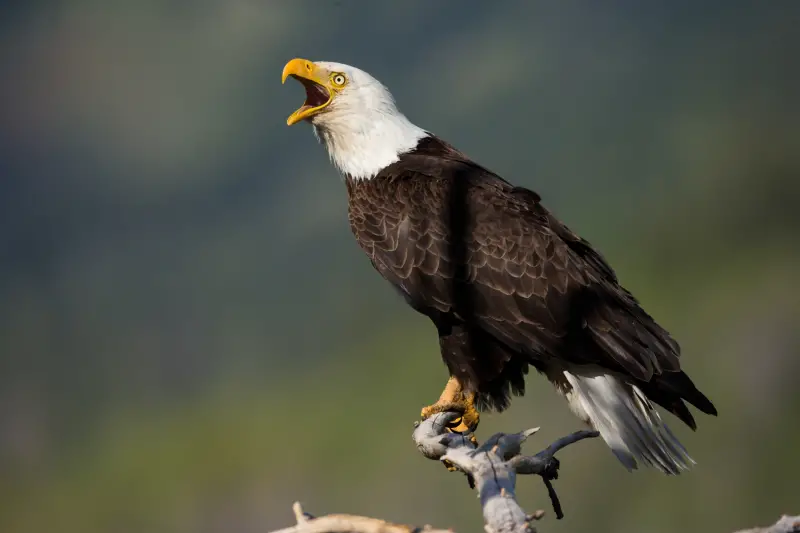
The Bald Eagle is undoubtedly the most recognized eagle species in North America, famous for its distinctive white head and tail contrasting with a dark brown body. These birds are not only symbols of strength and freedom but are also a conservation success story, having rebounded from the brink of extinction in the mid-20th century.
In Las Vegas, Bald Eagles are typically seasonal visitors, most commonly seen during the cooler months. They migrate to the region from northern states and Canada, seeking milder winter climates and abundant food supplies. Lake Mead National Recreation Area is a prime location for spotting Bald Eagles, where fish are plentiful, and there is ample open water.
These eagles display impressive hunting skills, primarily feeding on fish, but they are also opportunistic feeders that consume waterfowl, small mammals, and carrion when available. Their powerful talons and keen eyesight allow them to spot prey from great heights, and their swift, controlled dives are a spectacular sight to witness.
Bald Eagles nest in tall trees or on cliffs, and in the Las Vegas area, they often choose secluded areas near water. The presence of these eagles has increased thanks to conservation efforts that protect nesting sites and maintain clean waterways. Birdwatchers in Las Vegas eagerly anticipate the arrival of Bald Eagles each year and often visit designated areas to catch a glimpse of these regal birds.
Golden Eagles: The Desert’s Silent Hunters

While Bald Eagles are more conspicuous, the Golden Eagle presents a different image of grandeur. Known for its dark brown plumage and golden feathers on the back of the head and neck, the Golden Eagle embodies the rugged wilderness spirit of the American West.
Golden Eagles inhabit the mountainous and desert regions surrounding Las Vegas, including the Spring Mountains and the Red Rock Canyon National Conservation Area. These eagles prefer open spaces where they can soar at great heights and survey vast territories in search of prey.
Unlike Bald Eagles, Golden Eagles mainly hunt mammals such as rabbits, ground squirrels, and prairie dogs. They rely on their speed, agility, and powerful talons to capture fast-moving prey. Their hunting strategy involves soaring high and then swooping down with precision to snatch their target.
Golden Eagles typically nest on cliffs or in large trees, using the same nesting sites year after year. These birds are more elusive than Bald Eagles, often avoiding heavily populated areas. However, their presence near Las Vegas adds to the ecological diversity of the region.
Conservation efforts focus on preserving their natural habitats and minimizing human disturbances, which are critical for sustaining Golden Eagle populations in desert environments. Their solitary nature and stealth make sightings less common, but spotting a Golden Eagle in flight is a thrilling experience for any bird enthusiast.
Habitat Characteristics Supporting Eagles in Las Vegas
The varied habitats around Las Vegas create suitable living conditions for both Bald and Golden Eagles. Water bodies such as Lake Mead, Lake Mohave, and the Colorado River provide essential resources, especially for Bald Eagles that depend on fish. These lakes and rivers not only offer food but also create microhabitats with vegetation and nesting sites.
The rugged terrain of nearby mountains and canyons offers refuge and nesting opportunities, particularly for Golden Eagles. Areas like the Spring Mountains provide cliffs, caves, and sparse forests where eagles can build large nests and raise their young safely away from predators and human disturbance.
Additionally, the desert plains and open spaces surrounding the city serve as hunting grounds for these birds. Open terrain allows eagles to spot prey from above and dive swiftly for capture. This combination of water sources, cliffs, forests, and open land forms a mosaic of habitats that sustain eagle populations near Las Vegas.
The Importance of Conservation and Human Impact
Eagles face various challenges in the Las Vegas region due to urban expansion, habitat fragmentation, and pollution. The growth of the city means loss of natural habitats, increased human disturbance, and risks from vehicles and power lines. Water pollution also affects fish populations, indirectly impacting Bald Eagles’ food supply.
Fortunately, federal and state agencies have implemented conservation measures to protect these majestic birds. The Bald and Golden Eagles are protected under the Bald and Golden Eagle Protection Act, which prohibits hunting, disturbing, or destroying their nests. Habitat preservation efforts include maintaining protected areas like Lake Mead National Recreation Area and Red Rock Canyon.
Public awareness and responsible recreation near eagle habitats are vital. Educating residents and visitors about the importance of minimizing disturbance during nesting seasons and avoiding feeding wildlife helps reduce negative impacts.
Research and monitoring programs track eagle populations and health, ensuring that management strategies adapt to changing conditions. These efforts contribute to the resilience of eagle populations in and around Las Vegas.
How to Spot and Identify Eagles in Las Vegas
Spotting an eagle in the wild is an unforgettable experience, and Las Vegas offers several opportunities for eagle watching. The key to successful observation is understanding eagle behavior and habitat preferences.
Bald Eagles are often found near large water bodies where they hunt fish. Early mornings and late afternoons during the winter months provide the best chances of sightings. Look for large birds with white heads and tails perched in tall trees or soaring with slow, graceful wingbeats.
Golden Eagles are more commonly seen in open desert or mountainous areas. Their dark brown bodies and golden neck feathers can be distinguished during flight by their long wings and strong, direct flight pattern. Because they are more solitary and elusive, spotting Golden Eagles requires patience and visits to protected natural areas.
Using binoculars and spotting scopes enhances the viewing experience, allowing for closer inspection of plumage and behavior without disturbing the birds. Photography enthusiasts often visit popular eagle habitats to capture stunning images of these raptors in flight.
The Role of Eagles in the Local Ecosystem
Eagles are vital components of the ecosystems surrounding Las Vegas. As apex predators, they help control populations of fish, small mammals, and other birds, maintaining balance in the food web. Their scavenging behavior also contributes to cleaning up carrion, preventing the spread of disease.
The presence of healthy eagle populations indicates overall environmental health, as these birds are sensitive to pollution and habitat changes. By protecting eagle habitats, conservationists also safeguard many other species that share the ecosystem.
Eagles inspire a deep appreciation for wilderness and encourage people to value natural spaces. They serve as ambassadors for wildlife conservation in the region, motivating community efforts to preserve Nevada’s natural heritage.
FAQs About Eagles in Las Vegas
What Types of Eagles Can Be Found in Las Vegas?
The two main types of eagles found in Las Vegas are the Bald Eagle and the Golden Eagle. Bald Eagles are more commonly seen near water sources like Lake Mead during winter, while Golden Eagles inhabit mountainous and desert areas nearby.
When Is the Best Time to See Eagles in Las Vegas?
Bald Eagles are most often observed during the cooler months, especially in winter when they migrate to the area. Golden Eagles can be seen year-round but are more elusive and tend to avoid populated areas.
Where Are the Best Places to Spot Eagles in Las Vegas?
Prime locations for eagle watching include Lake Mead National Recreation Area, the Colorado River, and the Spring Mountains. These areas provide suitable habitats with water, food, and nesting sites.
What Do Eagles in Las Vegas Eat?
Bald Eagles primarily feed on fish but also consume waterfowl, small mammals, and carrion. Golden Eagles mainly hunt mammals such as rabbits, ground squirrels, and other small desert animals.
How Are Eagles Protected in Las Vegas?
Both Bald and Golden Eagles are protected under federal laws like the Bald and Golden Eagle Protection Act. Conservation efforts focus on habitat preservation, minimizing human disturbances, and monitoring populations.
Conclusion
Eagles in Las Vegas, from the striking Bald Eagle to the elusive Golden Eagle, enrich the region’s natural heritage. Their presence highlights the diversity of habitats surrounding this desert city and underscores the importance of conservation efforts. For birdwatchers and nature enthusiasts alike, spotting these majestic raptors offers a glimpse into the wild side of Las Vegas, far beyond the neon lights.


